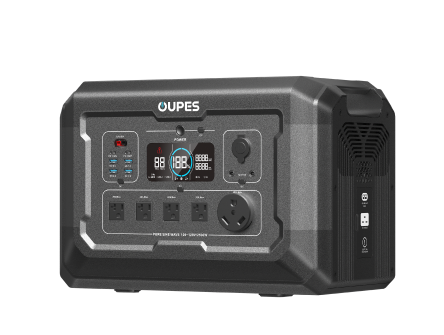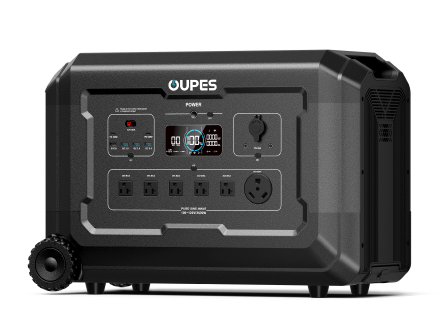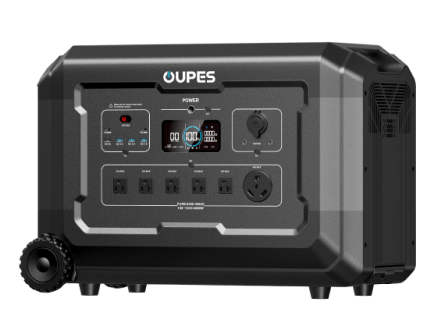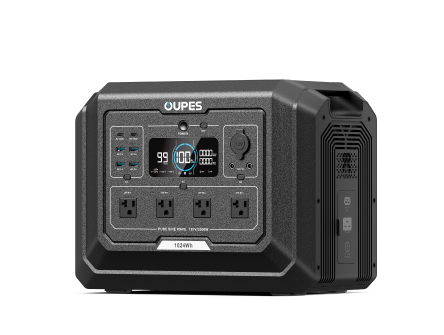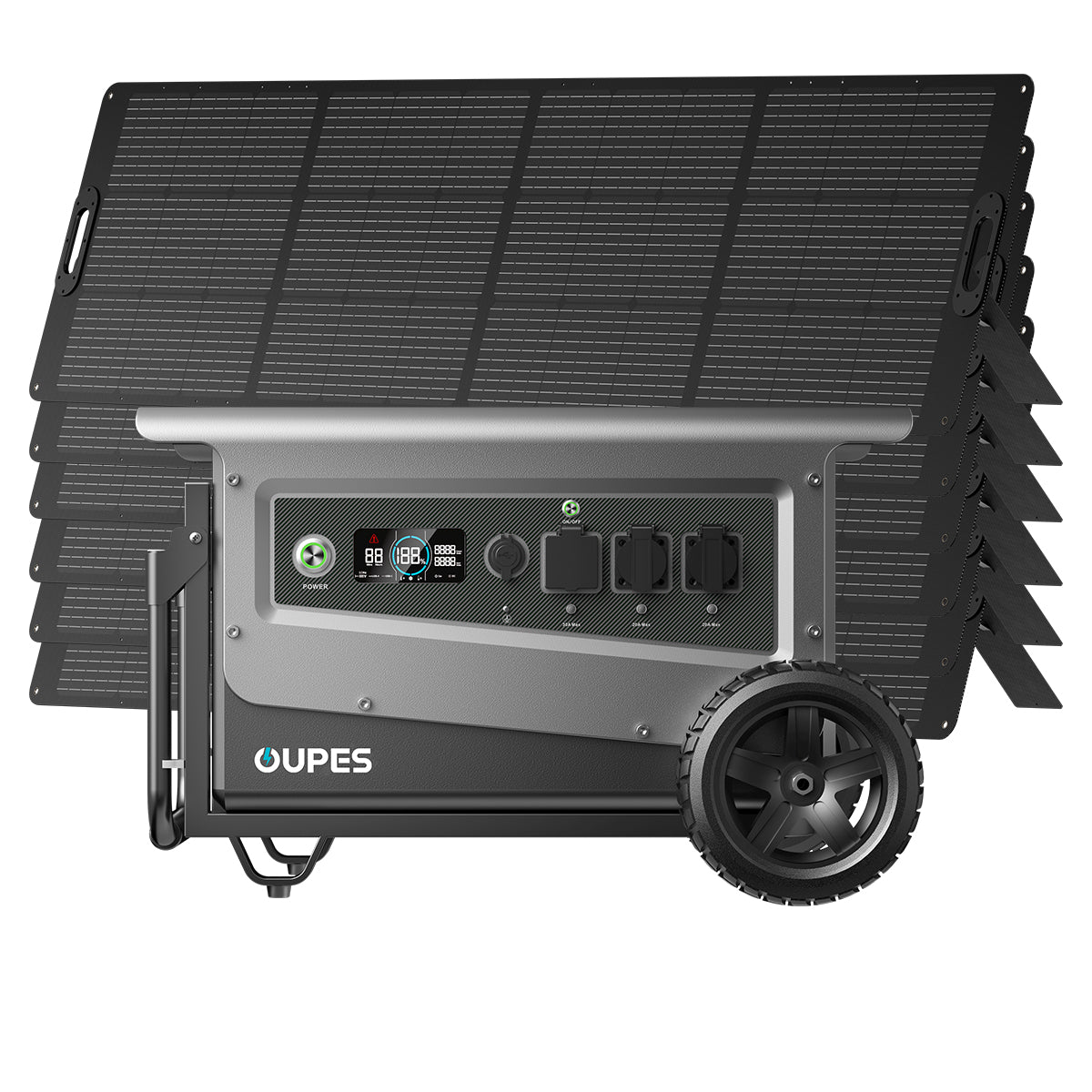
If you rely on a CPAP machine for a restful night’s sleep, traveling or dealing with power outages can be more than just an inconvenience—they can disrupt your health. That’s where a portable power station comes in. Compact, rechargeable, and increasingly powerful, these devices can keep your CPAP machine running even when you’re far from a wall outlet.
But how do you choose the right one? Not all power stations are suitable for CPAP usage, and making the wrong choice could mean running out of power in the middle of the night. In this guide, we’ll walk you through everything you need to know about selecting a portable power station that’s CPAP-friendly and fits your lifestyle.
Understanding CPAP Power Requirements
The first step in choosing the right portable power station for your CPAP machine is understanding the device’s power needs. Most CPAP machines consume between 30 to 60 watts per hour when operating without a heated humidifier. When the humidifier is on, that number can jump to 70 watts or more. Knowing your CPAP’s power usage is essential to determine how large a power station you'll need.
You’ll typically find this information in the user manual or on the CPAP machine’s label. Pay attention to whether it runs on AC power, DC power, or has a specialized adapter. Some CPAPs are more energy-efficient and even offer DC ports, which draw less power compared to running through an AC inverter.
Another factor to consider is how long you need the machine to run. Most users sleep for 6 to 8 hours a night. If your CPAP uses 40 watts per hour, that means you’ll need at least 320Wh of battery capacity to get through the night without any additional power consumption. Factor in a safety margin in case you need to run the humidifier or charge other devices.
Keep in mind that inverter efficiency matters too. If your CPAP machine requires AC power, the power station’s inverter will consume extra energy, often 10-15% more than the CPAP’s stated wattage. That’s why some power stations include dedicated 12V DC ports compatible with CPAP machines, allowing more efficient operation.
Key Features to Look for in a CPAP-Compatible Portable Power Station
Not all portable power stations are created equal, especially when it comes to powering sensitive medical equipment like CPAP machines. To ensure safe and reliable performance, here are the key features you should prioritize.
First and foremost, look for a power station with a pure sine wave inverter. CPAP machines are sensitive electronics, and a pure sine wave output ensures stable and clean power that mimics standard wall outlets. Avoid units with modified sine wave inverters, which can cause malfunction or excessive wear on your machine.
Battery capacity is crucial. As mentioned earlier, calculate your nightly CPAP usage and look for a power station with at least 400Wh capacity for peace of mind. If you want to use your humidifier or travel for multiple days without recharging, consider going for units in the 500Wh to 1000Wh range.
Port variety is another essential feature. The power station should include at least one AC outlet (with the right wattage rating), USB ports for charging small devices, and ideally a 12V DC output. Some models even offer a cigarette lighter port that matches the DC input of CPAP machines, which can drastically improve runtime and efficiency.
Portability and noise level should also be considered. If you're traveling or camping, you’ll want a lightweight and quiet unit. Most lithium-based power stations are significantly lighter than traditional lead-acid battery setups and operate almost silently—ideal for shared sleeping spaces.
Lastly, check for smart features such as an LED display, mobile app control, or battery management systems (BMS) that protect against overcharging and short circuits. These add convenience and peace of mind, especially when relying on the unit nightly for medical needs.
Using Solar Panels to Recharge Your CPAP Power Station
If you plan to use your CPAP on camping trips or during long-term power outages, pairing your portable power station with solar panels is a great way to extend its usability. Solar charging offers a renewable, off-grid energy solution—but it also requires proper planning.
The first thing to consider is the solar input compatibility of your power station. Many CPAP-compatible units feature an MPPT (Maximum Power Point Tracking) charge controller, which improves the efficiency of solar recharging. Make sure the panel voltage and connectors (like Anderson or XT60) match your power station’s input requirements.
Next, think about the solar panel wattage. A 100W to 200W panel is often sufficient for recharging a mid-sized power station (400-800Wh), assuming you get several hours of direct sunlight. On a sunny day, a 200W panel can recharge a 500Wh power station in about 3 to 4 hours. This is more than enough to prepare your station for another full night of CPAP use.
Portable foldable solar panels are ideal for travel, while rigid panels may suit a semi-permanent setup like an RV or emergency station. Mounting flexibility and portability should align with your lifestyle and where you plan to use the unit most often.
Some power stations allow pass-through charging, meaning they can power your CPAP while simultaneously recharging from solar panels. This feature is highly convenient but can slightly reduce battery life over time, so use it sparingly and under manufacturer guidelines.
Also, remember to store your solar gear in a dry and safe environment. Weatherproof carrying cases or foldable pouches help protect the panels and keep accessories like extension cables organized and tangle-free. A reliable solar setup can significantly increase your independence and peace of mind, especially for extended off-grid use.
Popular Use Cases: Camping, Travel, and Power Outages
Many CPAP users look for portable power stations to maintain therapy during travel, emergencies, or outdoor adventures. The right unit allows you to stay compliant with your treatment wherever life takes you.
For campers and RV travelers, a CPAP-compatible power station is a must. National parks and remote campgrounds often lack electrical hookups. A reliable power source not only ensures a good night’s sleep but also lets you recharge phones, cameras, and even lights—all from one device. For tent campers, quiet operation and lightweight design become even more critical. Solar charging adds the ability to stay off-grid for multiple nights without worry.
Frequent flyers and hotel hoppers also benefit from a compact backup power solution. Some international locations have unreliable electricity or different voltage standards. Having a portable power station ensures that you can plug in your CPAP wherever you are without depending on converters or unstable grids. Make sure to check airline regulations if you plan to bring the power station on a plane, especially in carry-on luggage.
Power outages can be stressful for CPAP users, especially in areas prone to hurricanes, winter storms, or rolling blackouts. A backup power station helps you maintain your sleep therapy routine without skipping a beat. During emergencies, preserving health is paramount—and uninterrupted CPAP use can make a significant difference.
In all these scenarios, the benefits go beyond just medical use. A good power station serves as an all-around energy hub. Whether you need to stay connected, light your space, or even heat water, having an all-in-one unit that supports CPAP usage makes it a smart and versatile investment.
Helpful Tips for Maximizing Battery Life With a CPAP
Even the best power station has its limits. Learning how to stretch battery life can ensure that your CPAP runs through the night without hiccups—especially when off-grid or during long-term outages. Here are some practical tips.
First, disable the heated humidifier if possible. While it adds comfort, it significantly increases power draw. Many CPAP users report that using their machine without the humidifier can double the runtime on a single charge. If you must use humidity, consider switching to a passover humidifier, which doesn't require power.
Use DC power whenever available. If your CPAP

